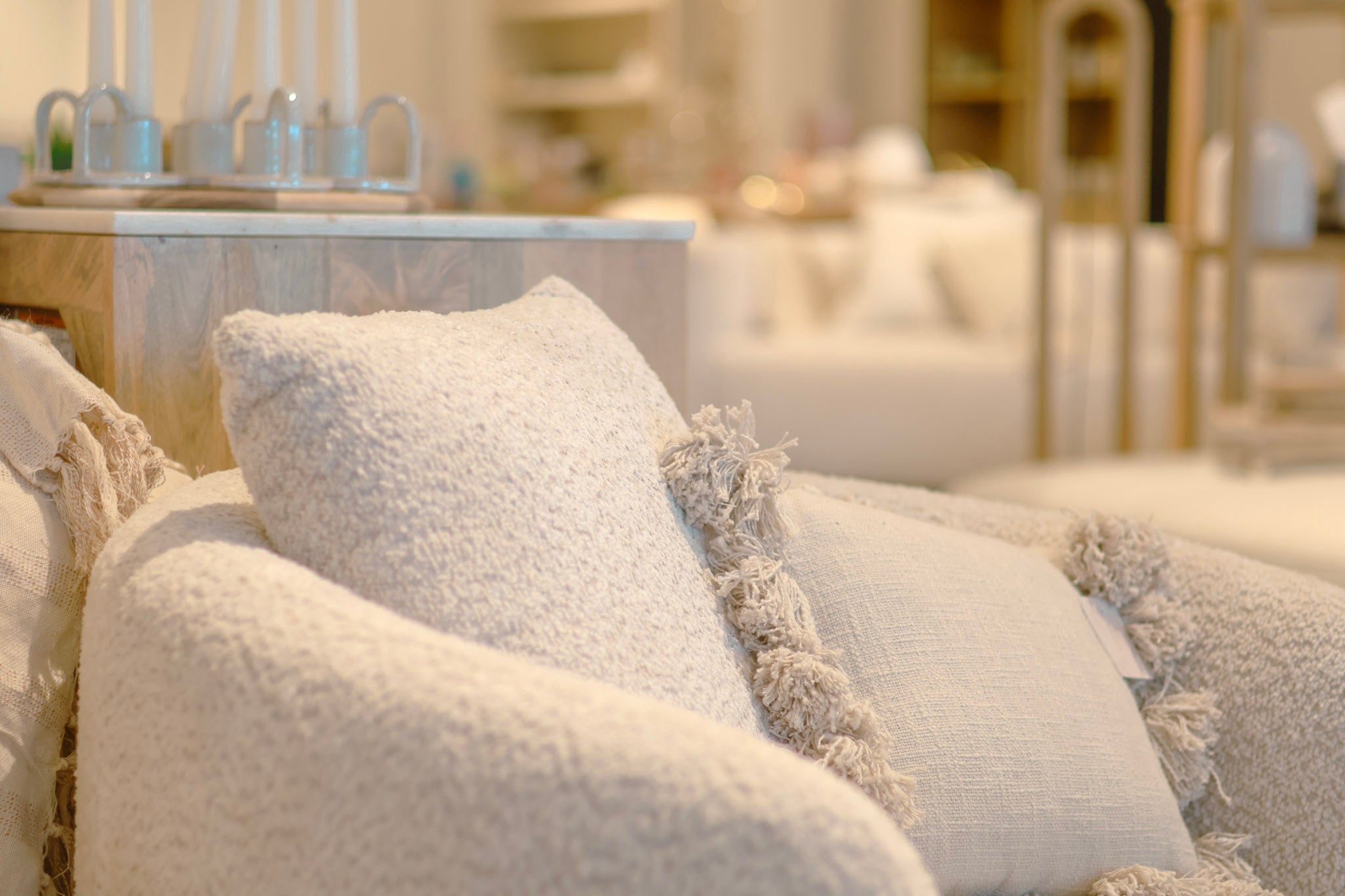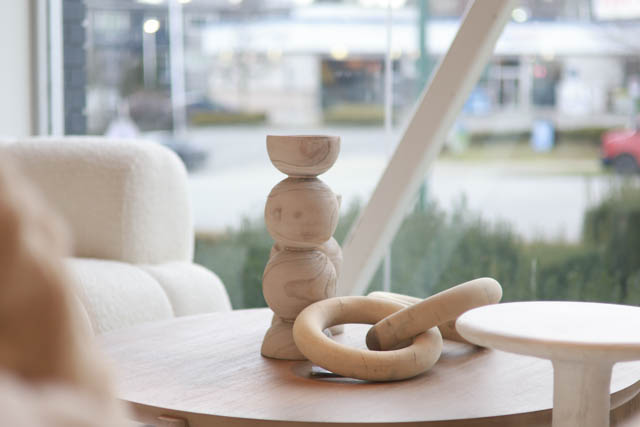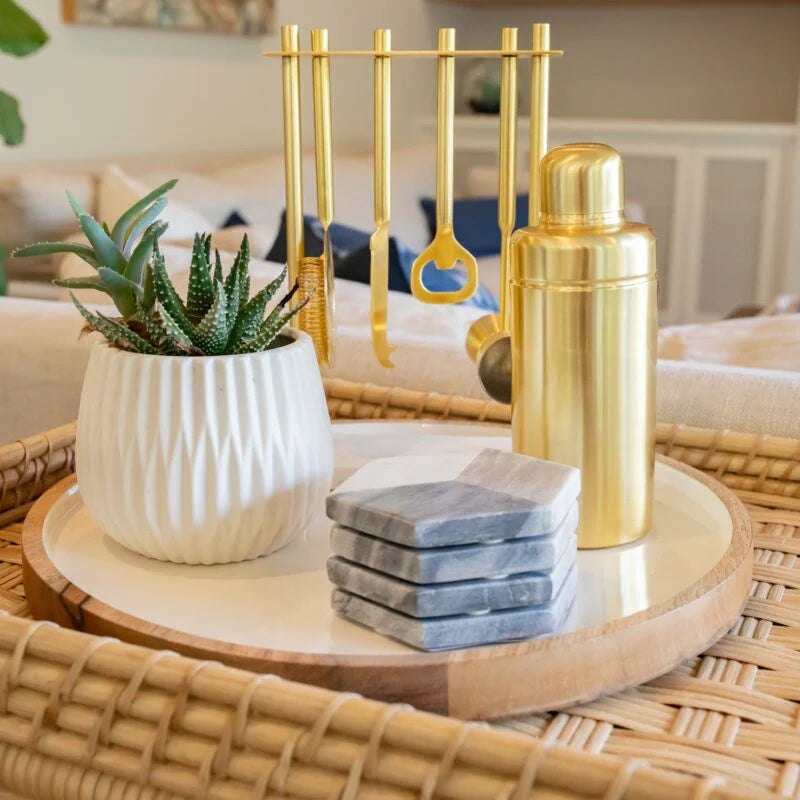
Scandinavian design furniture stands out for its calm presence and natural beauty. The clean lines, soft tones, and practical shapes create an inviting look that makes any room feel lighter and more open. Rooted in simplicity and warmth, this style often features well-crafted pieces made from materials like oak, ash, linen, wool, or leather. It's not just about how it looks. It's about how it feels to live with it every day.
To keep this kind of furniture looking and feeling great over time, it needs the right care. Without regular maintenance, even the best-quality pieces can start to fade, crack, or lose their shape. Thoughtful care keeps the surfaces smooth, the colours true, and the overall vibe relaxed and tidy. Whether your pieces are new or have been part of your home for years, knowing how to look after them helps preserve both their appearance and comfort.
Understanding Your Scandinavian Design Furniture
The first step in keeping furniture in good shape is knowing what you're working with. Scandinavian design is often easy to spot because of its calm colour palette, natural finishes, tapered legs, and focus on comfort alongside function. It’s not showy or flashy. It offers just what you need, with no extra clutter. This practical, stripped-down style works in almost any space, from compact city flats to larger open-plan homes.
Most Scandinavian-style pieces include natural hardwoods like birch, oak, or ash, usually with minimal stain or clear lacquer that shows off the grain. These woods are strong and long-lasting, but they can be sensitive to sharp changes in temperature or humidity. That means they’ll appreciate a stable indoor climate. Seating and bedding items often incorporate wool, felted blends, or light linen fabrics, which are soft and breathable but can wear down if they’re overwashed or exposed to too much direct sunlight.
Here’s what you’ll likely find in your Scandinavian furniture:
- Wood: Solid oak, ash, beech, and birch appear in tables, bed frames, cabinets, and chairs. They’re often sealed with natural oil or a clear finish to highlight their texture.
- Fabric: Linen, cotton blends, and wool are common covers for sofas, cushions, and throws.
- Leather: You might see full-grain leather on seating, sometimes vegetable-tanned for that soft, lived-in feel.
- Metal details: Brushed steel or powder-coated black metal is sometimes added for legs, handles, or drawer systems.
Knowing what each surface is made of helps keep it in good condition. For example, if you’ve got a light wool sofa with oak legs, those parts need totally different cleaning methods. It’s a balance between preserving the natural state of the materials and giving them regular attention so they don’t start to look worn out.
Regular Cleaning Routines
Each material in your furniture set has its own needs, but cleaning doesn’t have to be fancy. A quick light clean once a week and a deeper one every month or so usually does the job. Skip harsh cleaners or aggressive scrubbing. These can damage finishes or wear out natural fibres faster than you think.
Here are a few go-to habits to follow:
1. Wood surfaces
- Wipe with a soft, dry cloth every few days to remove dust
- For sticky spots or smudges, a damp microfibre cloth followed by a dry one works best
- Once a month, use a small amount of natural furniture soap or oil. Avoid silicone-based polishes as they can build up and dull the surface
2. Fabric covers
- Vacuum fabric cushions and seats once a week using a brush attachment
- Blot spills right away with a clean cloth. Don’t rub as it can spread the stain deeper
- Spot-clean lightly with a mild soap made for textiles. Always test it somewhere hidden first
3. Leather items
- Dust leather with a dry cloth every few days
- Every couple of months, wipe gently with a damp cloth without soaking it
- Use leather conditioner twice a year to stop it from cracking. Keep leather away from heaters and direct sunlight, both of which can dry it out
4. Metal parts
- Wipe with a dry or barely damp cloth
- Don’t use oily sprays or abrasive pads
With these tasks baked into your routine, furniture stays fresh and works the way it’s supposed to. Think of how easy it is to keep a dining table clean if you just give it a wipe each morning instead of scrubbing at dried spills later. That kind of attention saves time down the line and helps each piece age gracefully.
Seasonal Maintenance Tips
Vancouver weather has a personality. Long rainy stretches, dry spells, and coastal humidity all affect your furniture in different ways. Scandinavian design furniture may look simple, but the natural materials often used in it react to these seasonal shifts. Preventing damage usually comes down to a few adjustments throughout the year.
In autumn and especially leading into winter, moisture levels rise. Wood tends to swell in high humidity, which can lead to cracks or loose joints if ignored. If your home lacks proper ventilation or if you keep windows open during rain spells, that extra moisture may settle in wood frames, drawer joints, or legs.
Here’s how to help furniture through the changing seasons:
- Use felt pads under table and chair legs to avoid water transfer when it’s damp outside
- Try to maintain even humidity indoors using a dehumidifier or by simply keeping the space well ventilated
- Avoid placing wooden or leather furniture right against exterior walls or large windows where condensation could collect
Come spring and into early summer, things begin to dry out. That’s when fabric surfaces and leather can lose moisture, especially if they’re near a heater or fireplace. Crackling leather or faded fabric tightness is common when there's low humidity.
To reduce dryness during these months:
- Move pieces slightly away from heaters and fireplaces during colder nights
- Rotate cushions and seating pads every few weeks to even out sun exposure and wear
- Add light covers or throws to protect more delicate surfaces from direct sunlight
By tuning into what your furniture needs during shifts like Vancouver’s rainy fall or late dry spring, you stop small seasonal effects from becoming big repair jobs.
Repair and Restoration
Even if you care for your furniture consistently, little accidents can still happen. A coffee mug might leave a ring. A wooden armrest might get scratched by a belt buckle. A fabric cushion might catch a food stain. These things don’t automatically mean your furniture is ruined, but how you respond makes a big difference.
Some minor fixes are worth addressing sooner than later. Here are a few examples you might run into:
- Scratches in wood: Shallow surface scuffs can sometimes be softened by rubbing with a small bit of oil or wax that matches the wood’s original tone. Deeper marks should be looked at to see if they affect stability
- Loose joints or legs: If a table leg seems shaky or a joint starts creaking, avoid using power tools or glue to patch it up on your own. These quick fixes might misalign the frame. A professional can safely strengthen the piece without changing the look
- Line tears or fabric damage: A small tear in linen or wool should be reinforced before it spreads. Stitching or patching using similar fabric can be done, but with delicate materials, the work is often best handled by someone who understands upholstery techniques
Always avoid stripping finishes or sanding down wood as a first step. These jobs can change the piece’s tone or remove protective coats that are difficult to match again. Trust someone trained in working with natural materials, especially when dealing with heritage or high-quality Scandinavian pieces.
Preserving Aesthetic and Functionality
Scandinavian interiors work best when everything feels thoughtful, both in purpose and in placement. Caring for your furniture also means making sure the layout and organisation add to its lifespan instead of making daily use harder. Where and how you place it matters more than people often realise.
Try keeping heavy-use items, like dining chairs or bed frames, away from spots where they’ll constantly get bumped or pushed. A chair with spindly legs might look nice next to a coffee table, but if that space becomes a traffic zone for kids or pets, the wear will show quicker.
When adding something new to your setup, stick with the original tone and lines you’ve already got. Mixing materials isn’t the issue. It's clashing designs or unrelated shapes that throw off the look and feel you built. Collections of mixed woods still keep their balance when they share clean lines or matte finishes that stay close to Scandinavian roots.
Check over your furniture every few months for:
- Loose screws or shifting joints on chairs and tables
- Wobbly legs from uneven flooring or design changes
- Drawer tracks or slides that start stiffening with use
Even taking five minutes to tighten something, shift a chair leg back into line, or adjust spacing can keep pieces smoother and sturdier without needing deeper repair work.
Keep Your Space Cozy and Stylish
Scandinavian design furniture brings a quiet elegance to homes, and with the right care, it lasts for years and years. From adjusting to Vancouver’s humid winters to noticing the difference sunshine can make on fabrics in spring, being aware of the environment your furniture lives in really pays off.
Caring for these pieces isn’t a big chore when you’ve got a simple rhythm to follow. Weekly dusting, seasonal rearranging, mindful placement, and calling in trusted help for repairs all go a long way. That’s how you keep things looking fresh while still enjoying their comfort. Whether your space leans more modern or sticks close to traditional Nordic touches, well-kept furniture always makes it feel more alive.
Whether you’re refreshing your living room or refining your personal retreat, maintaining the elegance and simplicity of your Scandinavian design furniture can make a world of difference. To explore more about how these pieces can enhance your home, browse the curated selections at Hygge Design House. You'll find inspiration and ideas that perfectly capture the essence of minimalist beauty and functionality.





